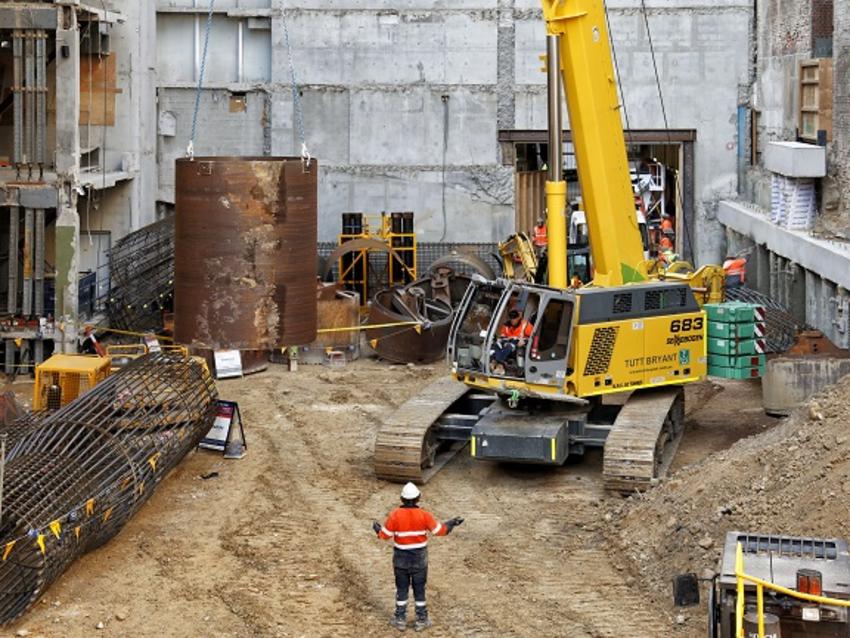Keller has set what is believed to be an Australian record for the highest loads on a single pile, after successfully completing foundation works on a challenging commercial tower project in the heart of Melbourne.

The project – for the 40-storey 405 Bourke Street tower – included the construction of large-diameter mega piles (four 2.1m and one 2.5m diameter) which will carry a load of up to 140MN – believed to be a national record.
“Due to the size constraints of the site – roughly 50m x 20m – the mega piles had to be constructed from the basement, two levels down,” explains Senior Project Engineer Sophie Rex. “Because there was no room for an access ramp, everything had to be craned into the site from the street, which added logistical complexity to the job.
“Just the space required to store the large-diameter tooling, cages and casings took up about a third of the site. The 80-tonne crane, Bauer BG30 drilling rig and other plant took up another third, which didn’t leave a lot of spare space.
“The planning process was very detailed and extensive, with a lot of back and forth between our technical team and the structural engineers on how the piles should be designed, and a lot of meetings with our client – and their client – to plan the logistics and sequencing of events. But we have excellent long-standing relationships with the builder, Multiplex, and the civil contractor, Delta Group.”
Bring on the SQUID
As well as the mega piles, the scope also included the design and construction of 47 bored retention piles (750mm diameter) and 51 bored foundation piles (900mm and 1200mm).
To confirm the quality of the mega piles, the team used new technology from America. The Shaft Quantitative Inspection Device – or SQUID – is attached to a Kelly bar and lowered into the pile to collect real-time data on the thickness and strength of the debris on the base of the pile. That data is recorded on a tablet and enables the team to make quick decisions on the integrity of the pile base.
“This is the first time SQUID has been used in Australia, so an expert came over from the US to show us how to use it and interpret the data,” adds Sophie. “Testing only took about 30 minutes whereas the alternative would have taken hours.”
A great team effort
After being awarded the contract in February, Keller completed the retention piles in April and the foundation piling in August.
“The project has gone really well and was delivered on time, on budget and to a very high standard,” says Sophie. “It’s all thanks to a huge team effort across all areas of the Keller business. From the engineering support and experienced site crew, to the workshop team and management, this project couldn’t have been delivered in the manner and to the standard it was without lots of planning and a really knowledgeable team.”
The tower, which is scheduled for competition in 2021, has already secured the National Australian Bank as anchor tenant and is set to be one of the premier business addresses in Melbourne.